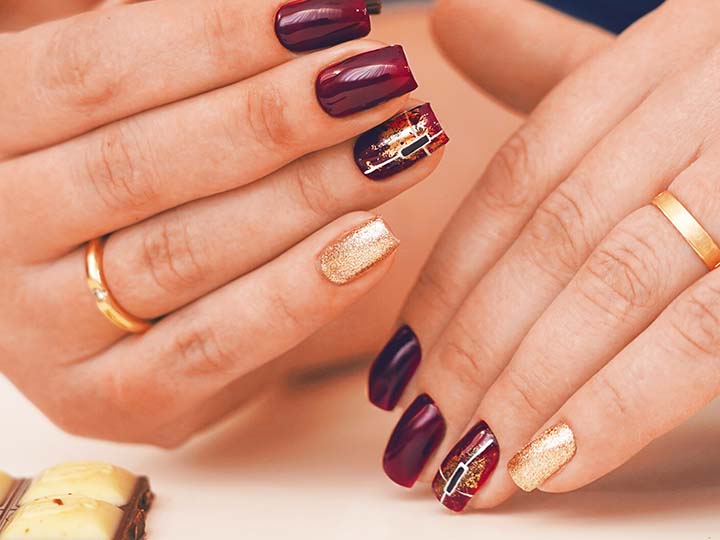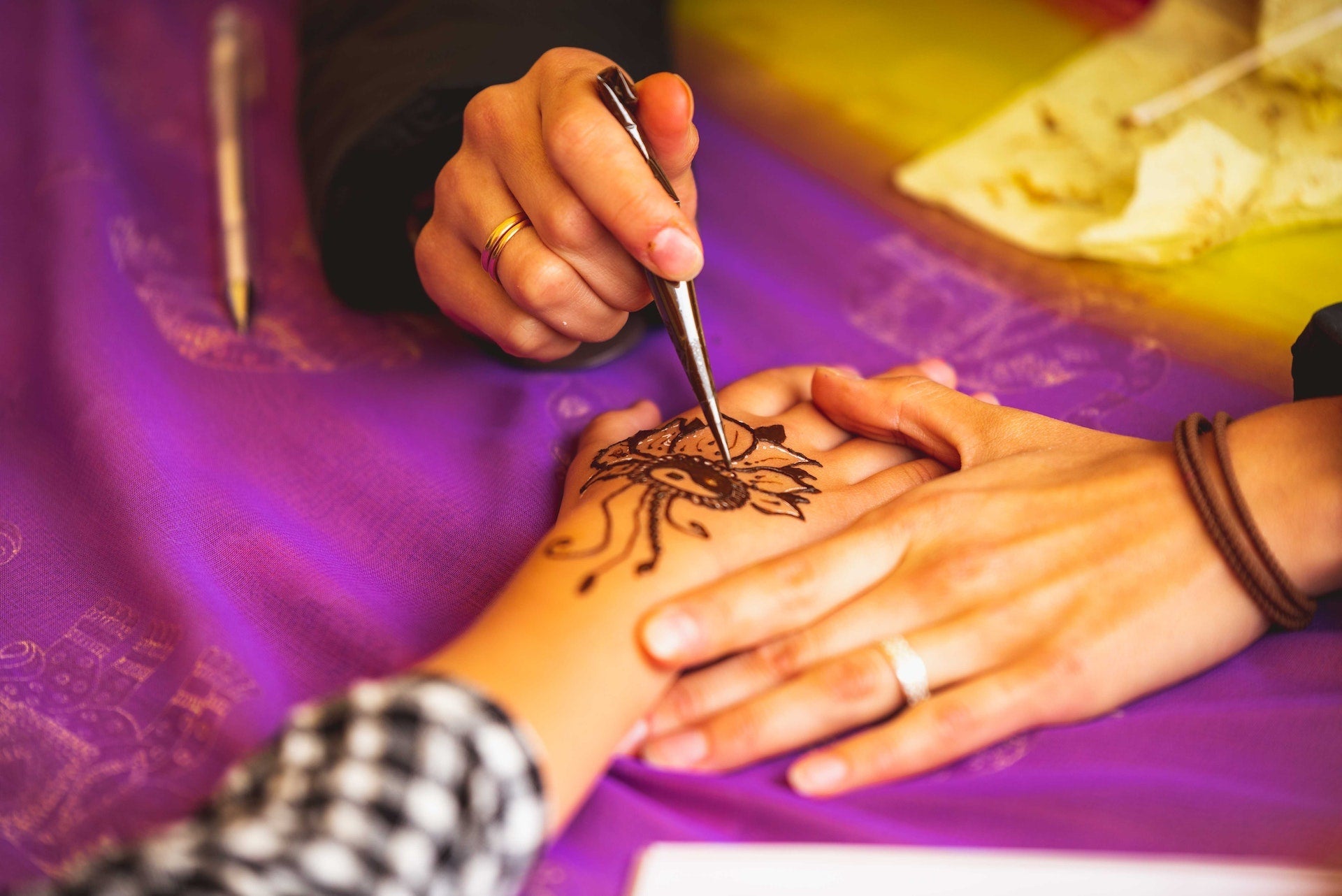Wondered What Fake Nails Are Made Of?
If you’ve ever gotten a manicure with acrylics, gels, or press-ons, you’ve probably wondered, what are fake nails made out of? Fake nails are an incredibly popular way to get long, flawless nails, but not all fake nails are created the same. The materials used to make fake nails can vary, and each type comes with its own benefits, durability, and look.
In this quick guide, we’ll break down the different materials used in the most common types of fake nails—acrylic, gel, and press-ons—so you can decide which one works best for you.
What Are Fake Nails Made Out Of?
Fake nails are typically made from a variety of materials that give them durability, flexibility, and a polished look. The three most common types of fake nails are acrylic nails, gel nails, and press-on nails, and each uses different materials to achieve that perfect finish.
Let’s explore the key materials for each type.
Acrylic Nails: Durable and Long-Lasting
Acrylic nails are one of the most popular types of fake nails, known for their durability and strength. But what are acrylic nails made out of?
Acrylic Nail Materials:
- Liquid Monomer: This is the liquid part of the acrylic system. It’s made up of chemicals like ethyl methacrylate (EMA) or methyl methacrylate (MMA). When combined with the powder polymer, it forms a hard, plastic-like surface once it cures.
- Powder Polymer: The powder is typically made from polyethyl methacrylate (PEMA), which is a type of plastic. This powder reacts with the liquid monomer to create a thick paste that hardens when exposed to air.
How They Work:
Acrylic nails are created by mixing the liquid monomer with the powder polymer to form a paste that is applied over the natural nails or nail tips. The mixture hardens quickly as it is exposed to air, creating a strong, durable artificial nail that can last for several weeks.
Pros:
- Extremely durable and long-lasting.
- Suitable for those who want dramatic length or custom nail shapes.
Cons:
- The application involves strong-smelling chemicals.
- Can be damaging to the natural nails if not applied or removed properly.
Gel Nails: Flexible and Natural-Looking
Gel nails are another popular option, known for their glossy finish and flexibility. But what are gel nails made out of? Gel nails differ from acrylics in both application and material.
Gel Nail Materials:
- Photoinitiators: Gel nails are made from a type of polymer that is cured using UV or LED light. The primary components of gel nails include photoinitiators, which are light-reactive ingredients that cause the gel to harden when exposed to UV light.
- Oligomers and Monomers: Gels are created using short-chain polymers called oligomers and monomers. These ingredients make the gel flexible and allow it to be shaped over the natural nail before curing.
How They Work:
Gel nails are applied in layers and require curing under a UV or LED lamp. The gel is applied as a thick coat over the natural nail or nail tips, and it hardens when exposed to light. This creates a flexible but strong artificial nail that can last for weeks.
Pros:
- Flexible and feels more natural on the nails.
- High-shine, glossy finish.
- Less damaging to natural nails compared to acrylics.
Cons:
- Requires a UV or LED lamp to cure.
- Not as strong as acrylic nails.
Press-On Nails: Quick and Easy
If you’re looking for a hassle-free, temporary option, press-on nails are the way to go. But what are press-on nails made out of? These nails are usually pre-designed and ready to apply with adhesive.
Press-On Nail Materials:
- Acrylonitrile Butadiene Styrene (ABS): Most press-on nails are made from ABS plastic, a lightweight yet durable material. ABS is flexible enough to mimic the natural look of nails while still being strong enough to hold up during daily activities.
How They Work:
Press-on nails come with an adhesive backing or require nail glue. You simply press the nails onto your natural nails for an instant manicure. They are available in a wide range of styles, shapes, and colours.
Pros:
- Quick and easy to apply.
- No need for a trip to the salon or harsh chemicals.
- Affordable and reusable (in some cases).
Cons:
- Not as long-lasting as acrylics or gels.
- Can fall off easily if not applied correctly.
Other Materials You May Find in Fake Nails
While acrylics, gels, and press-ons use different base materials, some additional ingredients are common in most fake nails:
- Pigments and Dyes: These are added to give the nails their color and finish. Whether it's a subtle nude shade or a bold neon, pigments play a key role in achieving the final look.
- Adhesives: Many fake nails, especially press-ons, use adhesives made from materials like cyanoacrylate to bond the fake nail to your natural nail.
How to Choose the Right Type of Fake Nail for You
Now that you know what fake nails are made out of, how do you choose the right one for your needs? Here’s a quick comparison:
Acrylic Nails:
- Best for: Durability and long-lasting wear.
- Perfect if: You want dramatic length or a customized shape.
Gel Nails:
- Best for: A natural look with flexibility.
- Perfect if: You prefer a more lightweight feel and glossy finish.
Press-On Nails:
- Best for: Quick, easy, and temporary manicures.
- Perfect if: You want a low-commitment solution for a short-term event.
Wrapping It Up
Now that you know what fake nails are made out of, you can make a more informed choice about which type is right for you. Whether you go for the durability of acrylics, the flexibility of gels, or the convenience of press-ons, understanding the materials behind these artificial nails will help you find the perfect fit for your next manicure!
Transform your beauty routine with clean, natural products. Discover Mersi's best-sellers now.
FAQs: What Are Fake Nails Made Out Of?
- Are fake nails safe for your natural nails?
Fake nails are generally safe when applied and removed correctly. However, improper removal or excessive use of acrylics or gels can weaken natural nails over time.
- What is the difference between gel and acrylic nails?
Acrylic nails are made from a liquid monomer and powder polymer, while gel nails are made from a gel that hardens under UV light. Acrylics are more durable, while gels are more flexible and natural-looking.
- Can press-on nails be reused?
Some press-on nails can be reused if removed carefully and cleaned properly. However, this depends on the brand and type of adhesive used.
- Do acrylic nails damage your natural nails?
Acrylic nails can cause damage if not applied or removed correctly. Over-filing or improper removal can weaken or damage the natural nail.
- What materials are used in UV gel nails?
UV gel nails use photoinitiators, oligomers, and monomers that harden when exposed to UV or LED light.





Leave a comment
This site is protected by hCaptcha and the hCaptcha Privacy Policy and Terms of Service apply.